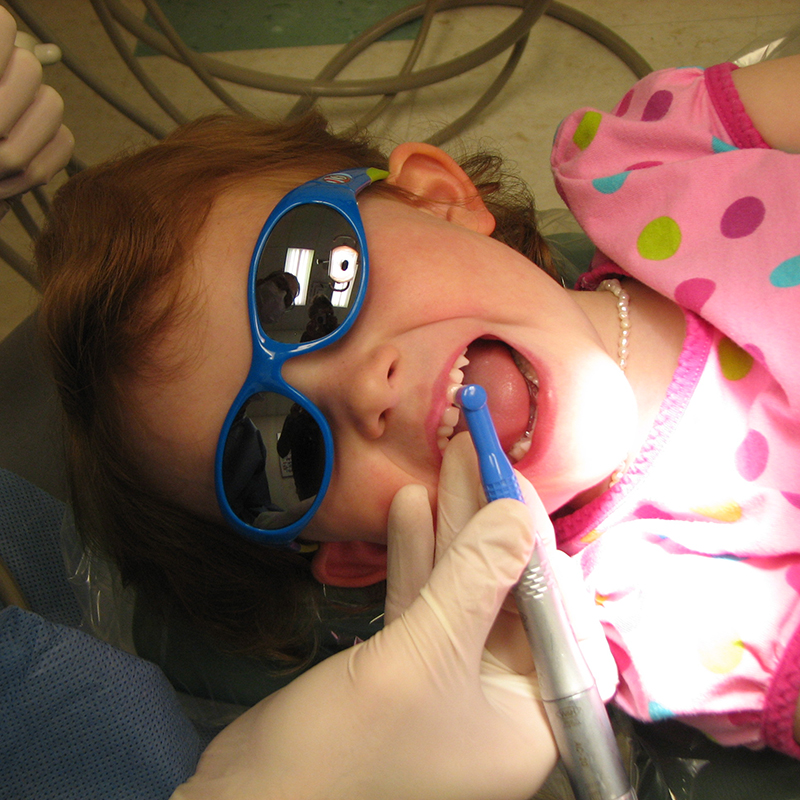Pediatric Dentistry
Dr. Richard specializes in children and has received an additional 2 years of education, specializing in Pediatric Dentistry in order to meet the unique dental and developmental needs of your children. With experience in behavior management techniques, Dr. Richard helps make the dental health process fun and easy.
Frequently Asked Questions
1. What is the difference between a pediatric dentist and my family dentist? Pediatric Dentists are the pediatricians of dentistry. A pediatric dentist has an additional 2-3 years of specialty training after dental school and limits his/ her practice to only treating infants, children, and adolescents, including those with special needs.
2. At what age should a child be for their first dental visit? The American Academy of Pediatric Dentistry recommends that your child’s first dental visit be when their first tooth erupts or no later than their first birthday. Consider it a “well baby check up” for your child’s oral health. Early dental visits will help your child remain cavity free. Dr. Richard offers complimentary oral health exams for ages 12 – 18 months.
3. Why are “baby teeth” or primary teeth so important? Primary, or “baby teeth” are important for many reasons. They are necessary for proper nutrition and growth, they provide and maintain space for the permanent teeth, and the primary teeth enable the development of speech and support positive self-image.
4. When should we start brushing my child’s teeth? Begin daily brushing when your child’s first tooth erupts. For children under the age of two, use a smear of non-fluoridated toothpaste and a soft- bristled brush. For children over the age of three, a pea-sized amount of fluoridated toothpaste is all your child needs. Parents should supervise brushing until about age 6-7 years old.
5. Diet and Your Child’s Teeth: Your child must have a balanced diet for their teeth to develop properly. Your child also needs a balanced diet for healthy gum tissue around the teeth. What is a balanced diet? One that includes the following major food groups: fruits and vegetables, breads and cereals, milk and dairy, meat, fish, and eggs. Frequent snacks in between meals expose teeth to repeated acid attacks. Be mindful of the effects of frequent consumption of sugary beverages including juices, sodas, sport drinks and non-nutritious snack foods. Avoid snacks with high sugar content and sugary beverages (juices, sodas, sports drinks) as prolonged exposure to their acidity can result in decay.
6. Fluoride: Fluoride is a naturally occurring mineral that combines with tooth enamel to make it more resistant to decay. The most effective way to protect your teeth against decay is to be sure to drink water with the appropriate amount of fluoride. In addition, when fluoridated drinking water is consumed during the development of teeth it is built into the teeth thus making them more resistant to cavities. Fluoride is found in toothpaste, rinses, gels, and most city water supplies. A thorough evaluation of the child’s cavity history, future cavity risk, chronological age, and water source should be performed before prescribing fluoride supplements.
7. Sealants: A sealant is a clear material that is applied to the biting surfaces of the back teeth, where decay occurs most often. The sealant acts as a barrier, protecting the decay-prone areas of the back teeth from plaque and acid attacks. Sealants are usually applied on the first permanent molars when they erupt at age 6-8 years.
8. Mouth Guards: When children begin to participate in organized sports, trauma to the teeth can occur. Mouth guards are an important piece of protective gear by helping prevent broken teeth, injuries to the lips and cheek, and even jaw fractures.
9. Thumb Sucking & Pacifiers: Sucking thumbs, fingers, or other objects is a natural reflex for infants and young children and may help them to feel safe, secure, and happy. Children should cease all non-nutritive sucking habits by the age of 4 years. Any non-nutritive sucking habit persisting beyond 4 years of age can cause constriction of the upper jaw, problems with tooth alignment, and may interfere with the growth of the jaws.
Dental Emergencies
1. Knocked Out Baby Tooth: If you are certain that it is a baby tooth, do not replace it in the socket but keep it for Dr. Richard and call the office.
2. Knocked Out Permanent Tooth: Find the tooth. Handle the tooth by the crown, not the root portion. You may rinse the tooth, but DO NOT clean or handle the tooth unnecessarily. Inspect the tooth for fractures. If the tooth is sound, try to reinsert it in its socket. Have the patient hold the tooth in place by biting on gauze. If you cannot reinsert the tooth, transport the tooth in a “save a tooth” solution or in a cup containing milk. Call Dr. Richard immediately. Dr. Richard will need to see the patient as soon as possible. Time is the critical factor in saving a tooth.
3. Cut or Bitten Tongue, Lip or Cheek: Apply ice to the area. If bleeding, apply soft, gentle pressure with gauze or cloth. If bleeding does not stop after 15 minutes, take your child to the ER.
4. Toothache: Clean the affected tooth thoroughly. Rinse the mouth vigorously with warm water or use dental floss to dislodge any impacted food or debris. Do not place aspirin on the gum or tooth. If face is swollen, apply cold compresses. Call Dr. Richard.
5. Broken or Chipped Tooth: Rinse dirt or debris from the injured area with warm water. Place cold compresses if needed. Locate and save any broken tooth fragments. Call Dr. Richard.





